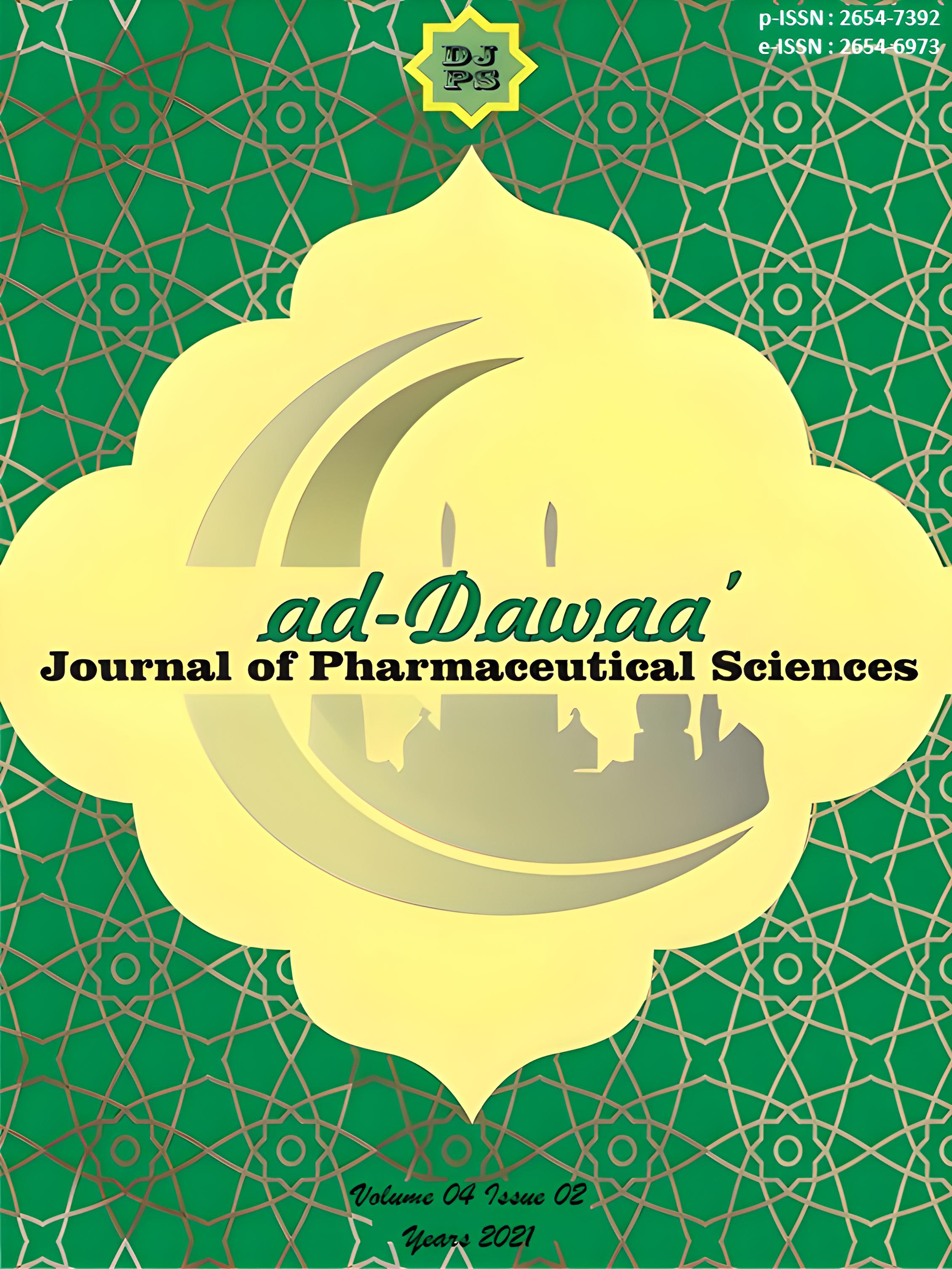Isolation and Identification of New Pigment From Monascus purpureus
Abstract
This research was aimed to isolate and identify the new pigment from the main pigments of Monascus purpureus, which derive from five different isolates and through with solid fermentation used IR-64 rice as substrate. The measurement of pigment was done by extracting t samples using methanol in the 14th day of fermentation process. The absorbance of main pigment was measured by a UV-Visible spectrophotometer at the wavelengths of 364, 365, 375, 400, 480 and 500 nm. The results showed that the absorbance of each pigments isolate varied within ranges from 0.219 to 0.559. Result followed of Thin Layer Chromatography (TLC) method with chloroform: acetone (9: 1). TLC results were followed by isolating IPB-B samples using Thin Layer Chromatography- Preparative (TLC-P), whereas the band obtained was identified by using Liquid Chromatography-Mass Spectrum (LC-MS) instrument. The isolated and identified IPB-B samples showed that there was found a new compound of Molecular Weight (MW), which was Monaphilol A with Molecular Weight (MW) of 384.47.
Downloads
References
Feng, Y., Shao, Y., & Chen, F. (2012). Monascus pigments. Applied Microbiology and Biotechnology, 96(6), 1421–1440. https://doi.org/10.1007/s00253-012-4504-3
Gmoser, R., Ferreira, J. A., Lennartsson, P. R., & Taherzadeh, M. J. (2017). Filamentous ascomycetes fungi as a source of natural pigments. Fungal Biology and Biotechnology, 4(1), 1–25. https://doi.org/10.1186/s40694-017-0033-2
Higa, Y., Kim, Y. S., Altaf-Ul-Amin, M., Huang, M., Ono, N., & Kanaya, S. (2020). Divergence of metabolites in three phylogenetically close Monascus species (M. pilosus, M. ruber, and M. purpureus) based on secondary metabolite biosynthetic gene clusters. BMC Genomics, 21(1), 1–17. https://doi.org/10.1186/s12864-020-06864-9
Isbrandt, T., Tolborg, G., Ødum, A., Workman, M., & Larsen, T. O. (2020). Atrorosins: a new subgroup of Monascus pigments from Talaromyces atroroseus. Applied Microbiology and Biotechnology, 104(2), 615–622. https://doi.org/10.1007/s00253-019-10216-3
Kraboun, K., Kongbangkerd, T., Rojsuntornkitti, K., & Phanumong, P. (2019). Factors and advances on fermentation of Monascus sp. for pigments and monacolin K production: A review. International Food Research Journal, 26(3), 751–761.
Mondal, S., Pandit, S. G., Puttananjaiah, M. H., Harohally, N. V., & Dhale, M. A. (2019). Structural and functional characterization of new pigment molecule Monashin from Monascus purpureus CFR410-11. Process Biochemistry, 82(April), 173–178. https://doi.org/10.1016/j.procbio.2019.04.004
Parmar, R. S., & Singh, C. (2018). A comprehensive study of eco-friendly natural pigment and its applications. Biochemistry and Biophysics Reports, 13(December 2017), 22–26. https://doi.org/10.1016/j.bbrep.2017.11.002
Singgih, M., Julianti, E., & Yuliana, A. (2018). Padat dengan Limbah Ampas Kelapa sebagai Substrat dan Uji Aktivitas terhadap Escherichia coli dan Candida albicans Sekolah Farmasi , Institut Teknologi Bandung Pendahuluan Monascus purpureus adalah kapang berfilamen ascomycetes yang dikenal sebagai pen. Jurnal Farmasi Galenika, 5(2).
Singgih, M., Permana, B., Maulidya, S. A. I., & Yuliana, A. (2019). Studi In Silico Metabolit Sekunder Kapang Monascus sp. sebagai Kandidat Obat Antikolesterol dan Antikanker. ALCHEMY Jurnal Penelitian Kimia, 15(1), 104. https://doi.org/10.20961/alchemy.15.1.25294.104-123
Srianta, I., Zubaidah, E., Estiasih, T., Iuchi, Y., Harijono, & Yamada, M. (2017). Antioxidant activity of pigments derived from Monascus purpureus fermented rice, corn, and sorghum. International Food Research Journal, 24(3), 1186–1191.
Yuliana, A., Hilman Fitriaji S P, Khofi Siti Mukhaufillah, & Lina Rahmawati Rizkuloh. (2020). In Silico Study on Testing Antidiabetic Compounds Candidate from Azaphilone Mold Monascus sp. Microbiology Indonesia, 14(2), 2. https://doi.org/10.5454/mi.14.2.2
Once an article was published in the journal, the author(s) are:
- granted to the journal right licensed under Creative Commons License Attribution that allows others to share the work with an acknowledgement of the work's authorship.
- permitted to publish their work online in third parties as it can lead to wider dissemination of the work.
- continue to be the copyright owner and allow the journal to publish the article with the CC BY-SA license
- receiving a DOI (Digital Object Identifier) of the work.


1.png)